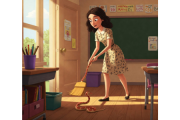Prologue to “Stories From My Prairie Childhood” – Why I’m Here
From retirement on I began to receive and amass a considerable amount of family memorabilia. In 2017 I had become totally overwhelmed by the mountain of disorganized information and didn’t know where to begin. Then I discovered Learning in Retirement at Carlton University. Courses on writing memoirs were available and I jumped at the chance that I might be able to climb that mountain. I’ve been scaling it ever since, at times still overwhelmed, but determined to at least reach the age of 20 on this wondrous and revealing trip into the past.
The series “Stories From My Prairie Childhood” focuses on a period that span years of depression and WW ll from the perspective of a pre-teen with two exceptions – “Tough Love” (still to be published) and “Rubella or Rubeola?” (where I was at the ages of 13 and 14). The stories are relatively ordered but may dissolve into disorder from time to time. Memories are like that.
The first story in this series is 1. The Pasture.
8. Prairie Savvy
In Saskatchewan during the 30’s and early 40’s keeping bread on the table could be a major challenge. The economy had tanked, the prairies went into a prolonged drought, and the world plunged into to a lengthy war. Many families lost everything, some to the financial crash, others to the persistently adverse weather.
In order to survive, individuals and families had to tap every resource possible to avoid destitution. For some this was impossible. You can’t farm if your land has been blown away and your animals either sold off before it was too late, or starved to death if you waited too long – hoping that the rains would come.
Although luck was part of the equation, so was ingenuity and the ability to adapt to the realities of the double whammy that had struck and seemed to have no end. My parents were in the lucky part of Saskatchewan, the parkland or central portion of our rhombus shaped province. Here we could still grow vegetables and husband live stock in healthy pastures.
Ours was a mixed farming operation. You grow or raise a little bit of everything. This was never a very profitable enterprise but it kept us afloat during the Dirty Thirties. If one crop failed there was usually another that did not. If crops were poor, a pig or a cow or some eggs could be sold for extra cash. We were never hungry.
Other avenues for weathering the “storm” depended on one’s skill set. Both of my parents had abilities that enabled them to pay for the things we needed that we couldn’t produce ourselves. Dad could fix almost anything, even had his own forge in his workshop. He was also a passable carpenter. That he had retained a working knowledge of his mother tongue added to our portion of luck. Work was to be had in Northern Saskatchewan. There he became foreman on a project where most of the workers spoke only French. At home, he kept a kit for repairing shoes. As children we lengthened the life of our shoes by going barefoot – although not all the time! We suffered very little from this experience. A careless slip on a cow path, a sliver here or there – that was about all.





